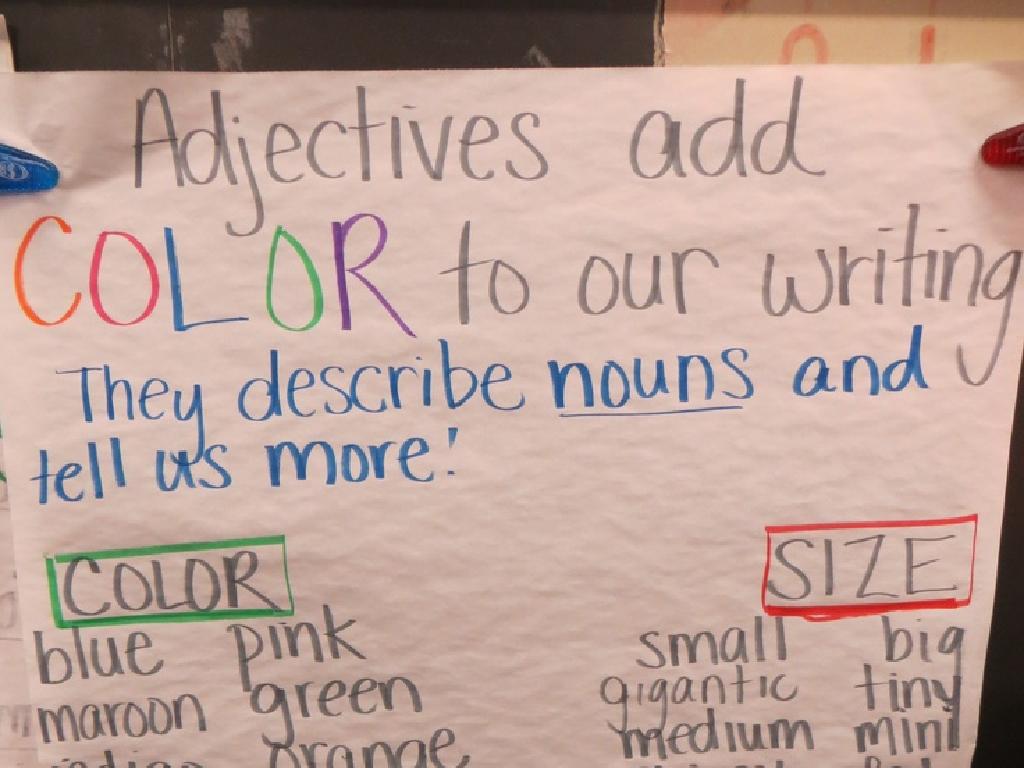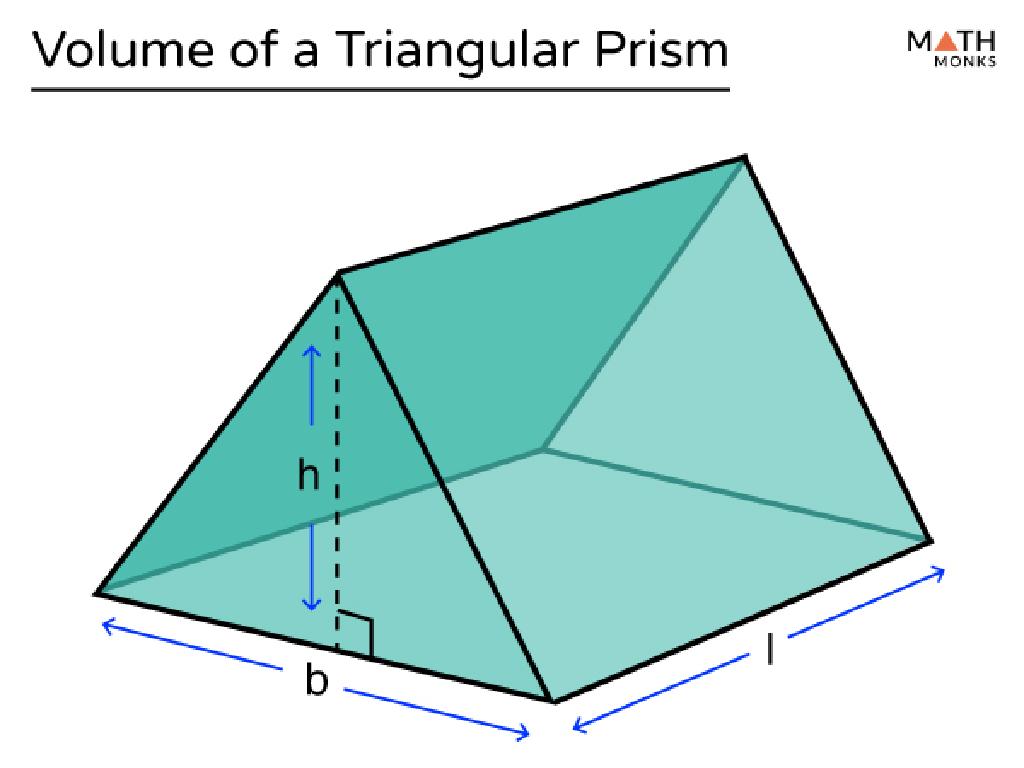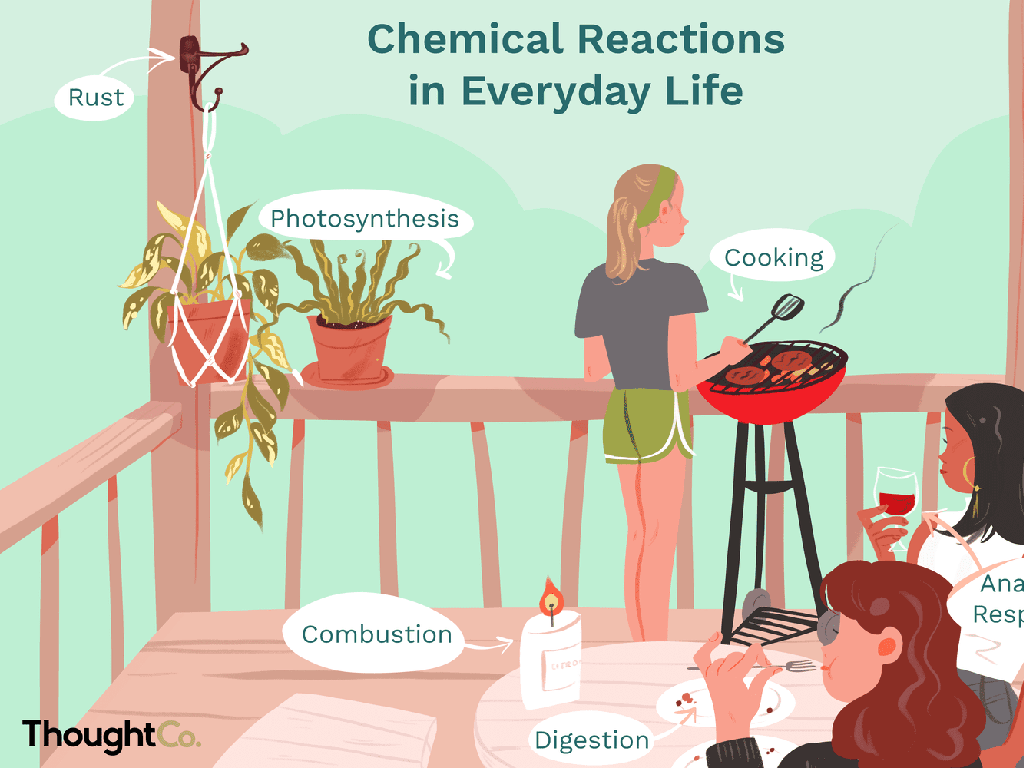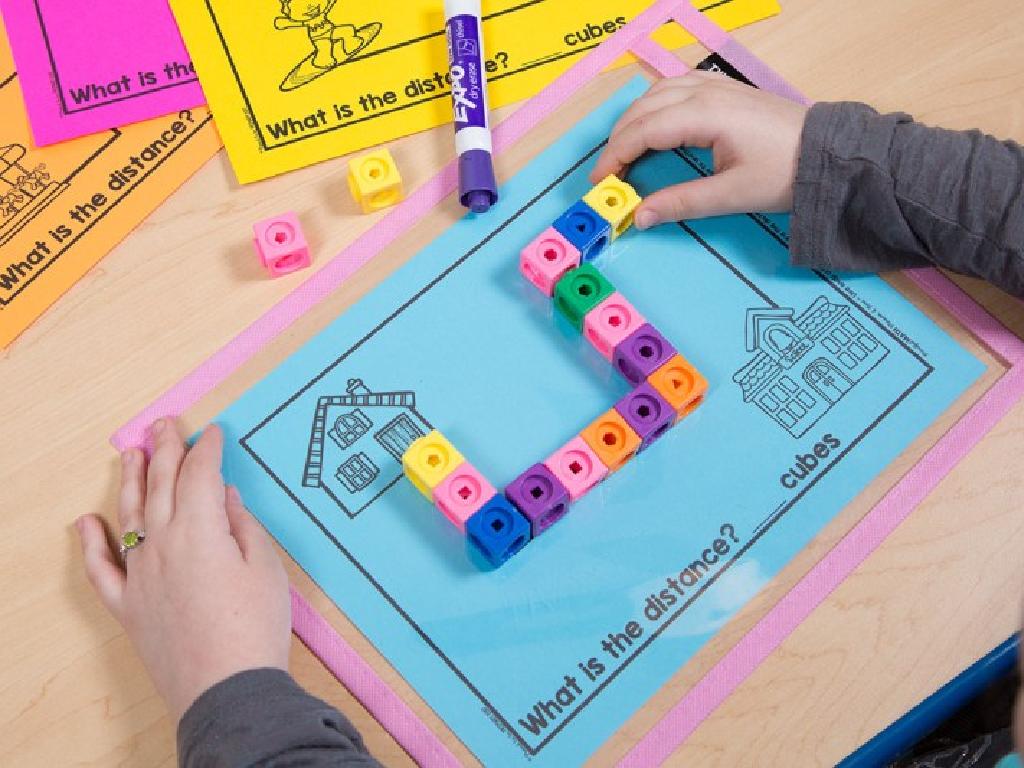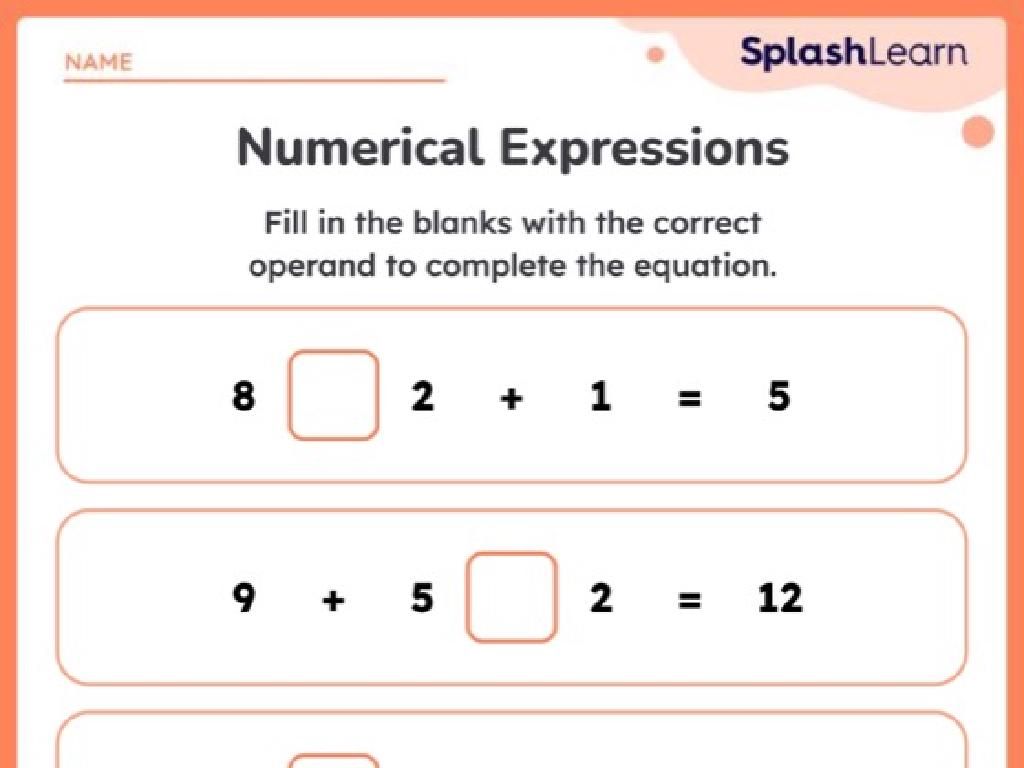Identify Similes And Metaphors
Subject: Language arts
Grade: Fifth grade
Topic: Literary Devices
Please LOG IN to download the presentation. Access is available to registered users only.
View More Content
Today’s Adventure: Similes and Metaphors
– What are similes and metaphors?
– Similes and metaphors are tools that make our writing vivid and interesting.
– Similes use ‘like’ or ‘as’ to compare
– Example of a simile: ‘She is as brave as a lion.’
– Metaphors directly state a comparison
– Example of a metaphor: ‘He is a shining star.’
– Enhancing language with similes and metaphors
|
This slide introduces the concept of similes and metaphors to the students. Begin by explaining that both similes and metaphors are used to compare two different things to add beauty and meaning to our language. Similes explicitly use ‘like’ or ‘as’ to show similarities between two things, while metaphors make a direct comparison without using ‘like’ or ‘as’, often saying something ‘is’ something else. Discuss why writers use these literary devices: to create more engaging and relatable content for readers. Encourage students to think of their own examples and understand how these devices make descriptions more powerful and imaginative.
Exploring Similes in Literature
– Similes compare using ‘like’ or ‘as’
– A simile is a figure of speech that directly compares two different things.
– Example: ‘As busy as a bee’
– This phrase suggests someone is very busy, just like bees are with their tasks.
– Similes enhance imagination
– They create vivid images in our minds, making descriptions more effective.
– Understanding through comparison
– By likening one thing to another, similes help us understand concepts better.
|
Introduce similes as a key literary device used to compare two unlike things, using ‘like’ or ‘as’ to highlight similarities. Use the example ‘As busy as a bee’ to illustrate how similes work. Explain that this simile helps us picture someone with a high level of activity, drawing a parallel to the industrious nature of bees. Discuss how similes enrich our reading experience by making descriptions more evocative and helping us to grasp complex ideas through familiar comparisons. Encourage students to think of their own similes and consider how these comparisons can offer deeper insights into the text.
Practice Similes: Create Your Own
– Understand similes in everyday language
– Similes compare two things to add meaning
– Create similes using ‘like’ or ‘as’
– Think of daily activities and form a simile
– Share your similes with a classmate
– Discuss how your similes give a vivid picture
– Reflect on the use of similes
|
This slide is designed to engage students in creating their own similes, a key literary device. Start by explaining that similes are comparisons using ‘like’ or ‘as’ to create a vivid image or express an idea more powerfully. Encourage students to think of routine tasks or familiar objects and create similes that relate to their experiences. After crafting their similes, students should pair up to share and discuss the effectiveness of their comparisons. This activity will help them understand how similes enhance descriptive language. As a teacher, walk around to listen to the similes, provide feedback, and offer suggestions to deepen their understanding. Possible activities: comparing their morning routine to a race, their school bus to a snail, or their homework to a mountain climb.
Understanding Metaphors
– Metaphor: a direct comparison
– Example: ‘Time is a thief’
– Time steals moments like a thief steals objects
– Metaphors make language creative
– They add depth to writing, making it vivid and imaginative
– Discussing the meaning of metaphors
– What does ‘Time is a thief’ suggest about how time passes?
|
A metaphor is a figure of speech that describes an object or action in a way that isn t literally true, but helps explain an idea or make a comparison. Here, ‘Time is a thief’ suggests that time can take away moments from us without our realizing, just as a thief does with our possessions. Metaphors are used to add symbolism and depth to writing, allowing readers to explore complex ideas through familiar concepts. In class, discuss the metaphor provided and encourage students to think about what qualities time shares with a thief. This will help them understand how metaphors function and enhance their ability to interpret figurative language.
Crafting Weather Metaphors
– Invent a weather metaphor
– Think of the weather and imagine it’s like a different object or creature.
– Weather as something else?
– How would you describe today’s weather by comparing it to an animal, object, or feeling?
– Share with the class
– Be ready to explain your metaphor to your classmates.
|
This slide is designed to engage students in creating their own metaphors related to the weather. Encourage them to think creatively about how the weather might resemble something else in the world around them. For example, a sunny day could be ‘a bright smile lighting up the sky.’ Ask them to consider the characteristics of the weather and what other things share those characteristics. This activity will help them understand how metaphors can paint vivid pictures and convey emotions effectively. During the next class, provide time for students to share their metaphors and discuss the imagery they created. This will foster a deeper understanding of metaphorical language and its use in literature.
Similes vs. Metaphors: Making Writing Shine
– Both add spice to writing
– Similes use ‘like’ or ‘as’
– Example: as brave as a lion vs. a brave lion
– Metaphors imply direct comparison
– Example: He is a shining star (no ‘like’ or ‘as’)
– Converting similes to metaphors
– Can ‘as strong as an ox’ become a metaphor?
|
This slide aims to help students differentiate between similes and metaphors, both of which enhance descriptive writing. Similes explicitly compare two things using ‘like’ or ‘as’, making them easy to spot. Metaphors, on the other hand, imply a comparison without using these words, often stating that one thing is another. Encourage students to practice by converting similes into metaphors, reinforcing their understanding of how each literary device works. For example, ‘as brave as a lion’ (simile) can be converted to ‘a brave lion’ (metaphor). This exercise will help students recognize and use these devices effectively in their own writing.
Class Activity: Literary Device Hunt
– Find similes and metaphors in books/songs
– Look for ‘like’ or ‘as’ for similes, and direct comparisons for metaphors
– Discuss the author’s purpose in groups
– Why did the author choose these words? What effect do they have?
– Present your findings to the class
– Reflect on how they enhance the text
– How do these devices make the writing more interesting?
|
This activity is designed to help students identify and understand the use of similes and metaphors in literature and music. By searching for these literary devices in familiar media, students can connect with the material in a personal way. In group discussions, encourage them to consider the impact of these devices on imagery and emotions. When presenting, students should explain the meaning of the similes and metaphors they found and why they think the author used them. This will help develop critical thinking and presentation skills. Possible activities: one group can focus on similes while another on metaphors, or each group can find both but in different books or songs.
Wrapping Up: Similes and Metaphors
– Congratulations on learning similes and metaphors!
– These devices brighten up our writing
– Like a painter uses colors, we use similes and metaphors to add flavor to text
– Spot them in books and stories
– Remember ‘as brave as a lion’? Look for such comparisons in what you read
– Practice using them in your own stories
– Try writing ‘Her smile was the sun’ instead of ‘She had a nice smile’
|
Great work today, students! You’ve learned how similes and metaphors can turn ordinary writing into extraordinary tales. Similes compare two things using ‘like’ or ‘as,’ while metaphors speak of one thing as if it were another. Encourage students to be detectives in their reading, seeking out these literary devices. Also, inspire them to experiment with similes and metaphors in their writing assignments to see how it can transform their stories. As a follow-up activity, students could rewrite a boring sentence using a simile or metaphor to see the difference it makes.

